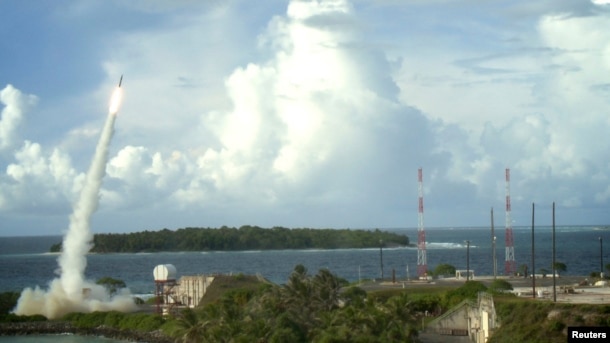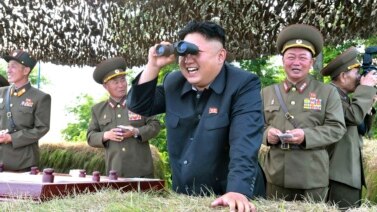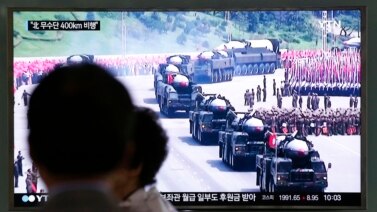
United States and South Korean officials have announced plans to deploy a U.S. missile defense system to South Korea.
The officials said the deployment is to answer North Korea's nuclear and ballistic missile development programs.
General Thomas Vandal is the chief of staff for U.S. Forces in Korea. He and South Korean Deputy Minister of Defense Ryu Je-seung made the announcement in Seoul.
Vandal said the two countries had to defend themselves from North Korean weapons. He criticized North Korea's continued development of ballistic missiles and weapons of mass destruction.
The missile system is called THAAD, short for Terminal High-Altitude Area Defense. It can shoot down ballistic missiles before they hit their targets on the ground.

On Friday, North Korea criticized the U.S. and South Korean agreement. China also expressed strong opposition to the planned deployment and urged the U.S. and South Korea to put a stop to it.
The Chinese Foreign Ministry said the missile system is not helpful for keeping peace on the Korean peninsula. It also said the deployment will harm the security of countries in the area, including China.
In the past, Chinese officials have raised concerns that the THAAD radar system could be used to observe Chinese territory.
The U.S. Department of Defense said in a statement that the only weapons to be watched will be North Korean weapons.
The Russian government also criticized the planned deployment. It said THAAD will have “irreparable consequences” and will increase tensions in East Asia.
South Korea and the United States opened talks about THAAD in February. That followed North Korea's most recent nuclear test and launch of a long-range rocket.
U.S. officials say North Korea has continued to develop its nuclear and missile program in violation of United Nations sanctions.
Last month, North Korea launched a partially-successful test of a Musudan missile. That missile flew about 400 kilometers before falling into the sea. But there were signs the North Korean military had or is close to developing the ability to reach U.S. bases in Asia and on islands in the Pacific Ocean.
North Korea is believed to have 30 Musudan missiles. The North Koreans also have close to 1,000 other Soviet model missiles. These missiles can reach targets in South Korea and Japan.
American officials have said they believe North Korea has enough plutonium to make eight to 12 nuclear weapons.
I'm Jonathan Evans.
Brian Padden wrote this story for VOA News. Jim Dresbach adapted it for Learning English. Youmi Kim in Seoul and VOA Pentagon correspondent Carla Babb provided additional information. George Grow was the editor.
We want to hear from you. Write to us in the Comments Section or visit our Facebook page.
Words in This Story
altitude - n. the height of something
peninsula - n. a piece of land that is almost entirely surrounded by water and is attached to a larger land area
ballistic missile - n. a weapon that is shot through the sky over a great distance and then falls to the ground and explodes
irreparable - adj. too bad to be corrected or repaired
sanctions - n. actions that are taken or orders that are given to force a country to obey international laws by limiting or stopping trade with that country
plutonium - n. an element that is used to make nuclear energy and nuclear weapons


